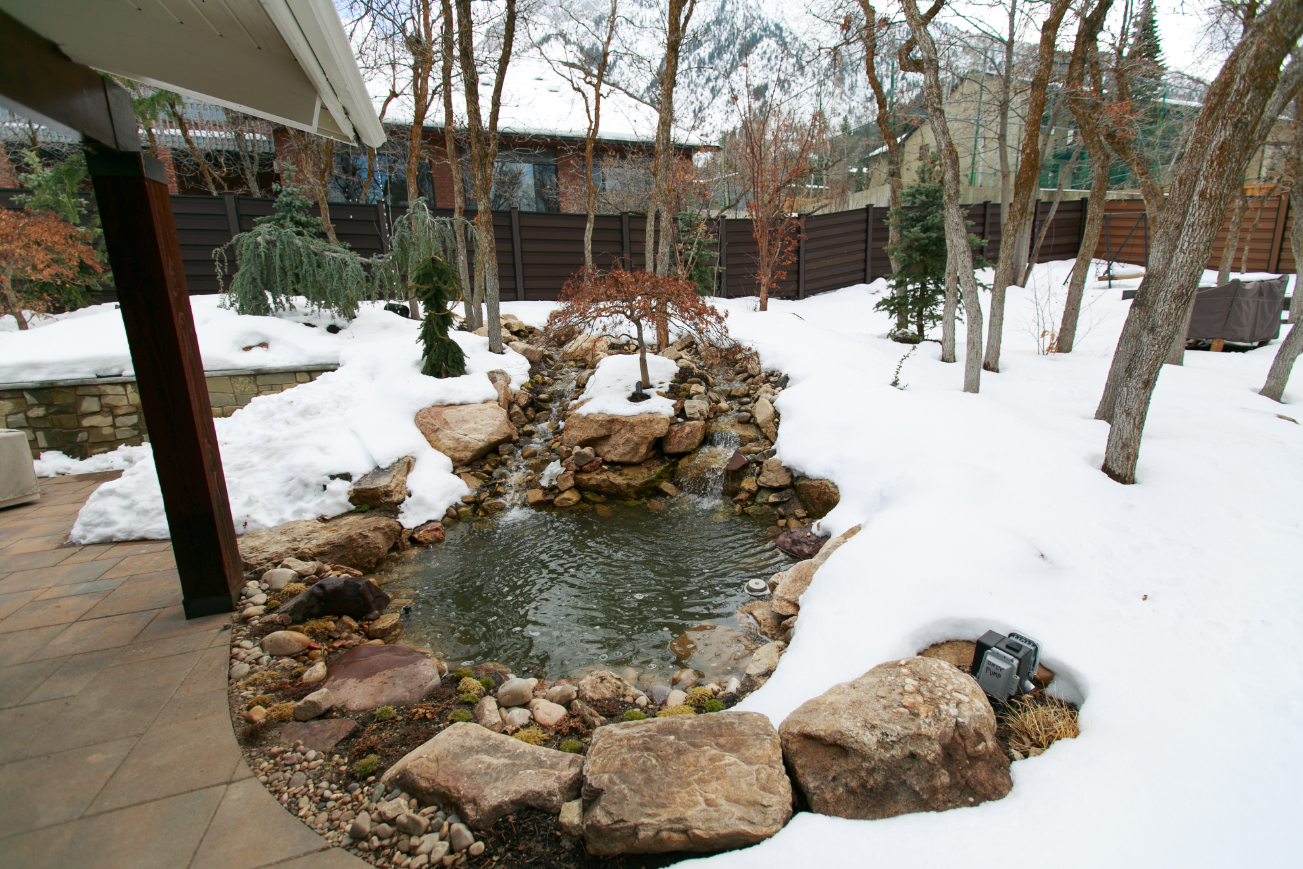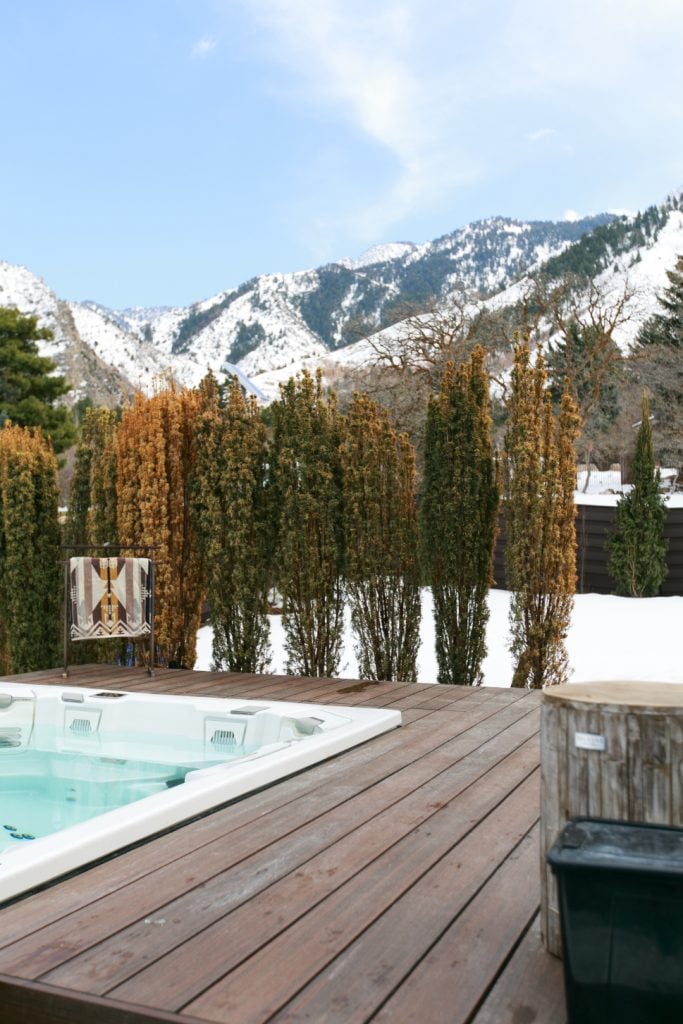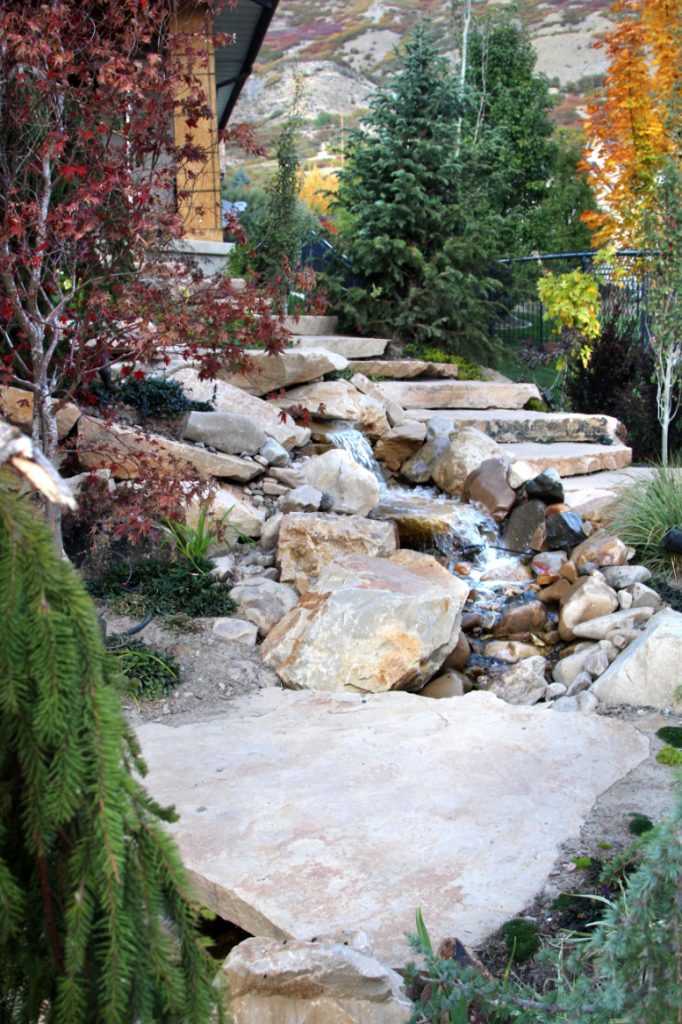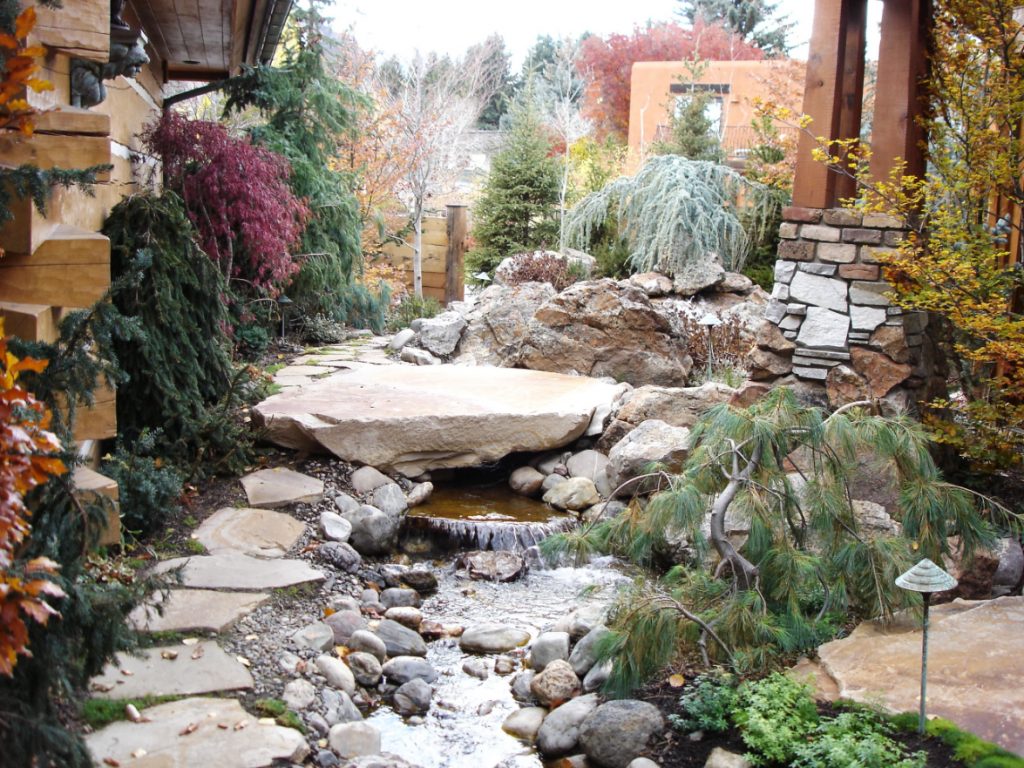
9 Tips For Prepping Your Yard For Winter
Those beautiful yards you see in the spring with their tulips and fresh lawns don’t happen by accident. Landscaping that pops first thing in the spring is a result of hard work and planning from the fall before. As much as you can tell who did prepare their yard for winter, you can also tell who didn’t, those yards with burst pipes and rotting leaves are an eyesore and a huge expense. If you aren’t sure what to do to make your yard the envy of the street in the spring, don’t worry! We have 9 tips to get you started.
Why Prep Your Yard For Winter
After all the fun of summer and early autumn, it’s easy to fall into a rut when it comes to landscaping and yard maintenance. But if you aren’t in the headspace of getting your yard ready for winter, the first snow will come and you’ll be wishing you had prepped sooner. With threats of soil erosion from increased precipitation, pest infestations in piles of debris, or damage to the hardscape of your yard (think crumbling pavers and rotting decks), the financial burden of not caring for your yard can’t be understated. Not only is it critical to prepare your yard for winter to avoid burst pipes, rotting plants, and a dead lawn, but you will thank yourself in the spring for the work you did in the fall when your yard starts to bloom, and you don’t have any major repairs to do.
9 Tips To Prep Your Yard For Winter
1. Sprinklers
Most homeowners know that sprinklers are the primary source for landscaping headaches, but simply turning off the sprinklers at the control box or on the app on your phone isn’t enough. If the pipes freeze they could rupture and cause huge problems in the spring, so you have to remove the water from the pipes before the first freeze. Some systems, like the models we recommend for our clients, have an automatic blowout feature, which simply requires following the instructions for that model. If you don’t have that type of system, you will need to blow out the sprinkling system with an air compressor or, if it’s on a slight incline, simply open all the valves and let the water run out. Your first year of winterizing your sprinklers might be a pain, but after you understand your system it’ll be a breeze in years to come.
2. Lawn Care
Lawns are the pride and joy of many homeowners, and without the correct winter prep, they can be destroyed in just a few months. There are some basic steps to take to prepare your lawn for winter and the best time to start depends on your location. Start by overseeding your lawn 6-8 weeks before the first hard freeze. A bigger lawn may require the use of a rotary spreader, but you can always do it by hand as well. Aeration is also key for keeping your lawn healthy through the winter. If you don’t have an aerator, you can rent one from your local hardware store. After aerating, use any compost you have to give the lawn nutrition and protection for the winter.
If you are wondering how to fertilize your lawn for winter, remember that the timing and ingredients of your fertilizer matter. If you have noticed more patches of whitish, grayish grass after the winter, you might have a problem with gray snow mold. If you have this issue, don’t use a fertilizer heavy in nitrogen, as this could cause the grass to try and grow during the winter months under the snow. Additionally, a fungicide should be applied in the fall to prevent gray snow mold.
Finally, the last time you mow for the season (which should be late into the fall to ensure your lawn doesn’t get snowed on when it is long), leave it short. This prevents rodents from burrowing and causing issues for you in the spring. These steps are crucial for lawn health, and you’ll likely need to do some trial and error with different lengths of grass, compost, and frequency of aeration. Typically, the greenest lawns are the ones whose caretakers are paying close attention to the needs and changes in the lawn, so be attentive and you’ll soon understand your lawn and how to best care for it.

3. To Prune Or Not To Prune
That really is the question. Many trees, bushes, and shrubs simply need to have dead or diseased growth removed as part of their winter prep. Others need full pruning as well as extra fertilization or even covering to keep them alive for the winter. For example, roses should be pruned in the early spring while evergreen shrubs and trees can be pruned in late winter. Some shrubs and trees might need to be wrapped in the winter either to protect it from frost or to avoid losing branches from heavy snow. Younger plants and trees could benefit from a burlap wrap or covering. Each plant in your yard likely has different needs. Taking the time to look up each plant’s individual needs is a great first step, and we recommend tracking those needs so you don’t have to check each fall.
4. Clean Out Or Cover Gardens
If you are one of those die-hard gardeners who keeps a winter garden, now is the time to start thinking about how you will cover your winter plants. A well know and effective option is a row cover, a plastic tarp draped over stakes. This keeps the heat in and the frost out. Your hardy plants will thank you! If you have other annuals or vegetable garden plants that will not survive the winter, now is the time to remove them from the garden.

5. Gutters
It isn’t just the ick factor of cleaning out gutters that makes this one of the worst yard tasks, it’s also the tedium of getting on and off a ladder as you clumsily shuffle one foot at a time down your house. However, cleaning out your gutters post leaf fall is crucial for the well-being of your home throughout the winter. Functional gutters mean you won’t have water leaking from the wrong places causing damage to your home.
6. Cover Outdoor Furniture And Grill
While it may seem obvious, many people skip this step in the fall and find themselves buying new deck chairs in the spring. Many outdoor furniture products can withstand more of the elements than their indoor counterparts, but that doesn’t mean they should. Grills are a high investment piece for any outdoor space, and taking the time to cover it can add years to the life of the grill. Covering your patio furniture and grills extends the life of the piece, and if you’ll thank yourself in the spring for taking this step.
7. Hoses And Yard Tools
Once you’ve finished your outdoor winter prep, it’s time to clean up the tools. The best way to extend the life of your hose and prevent freezing is to remove the hose from the hose bib and store it indoors for the winter. Then shut off the indoor valve for the hose bib to prevent freezing. Next grab all your lawn tools, the rakes, hand trowels, and shovels. Store these in a shed or garage to prevent unnecessary damage.

8. Winterize Machines
Now that all that mowing and trimming is out of the way, it’s time to winterize your outdoor machines. This can be anything from your lawnmower to your leaf blower. Make sure that you stabilize the fuel by adding a fuel stabilizer (available at home improvement stores), remove and sharpen the blade/chain, clean off any debris from the blade area (the organic material can trap moisture that causes rust), change the oil, replace spark plunges if necessary, check the fuel lines and filter. If it sounds like a lot, it is, but these steps are the best way to make sure your machines work well in the spring and beyond.
9. Plant Spring Bulbs
Now for the fun part- planting bulbs for the spring. Even though it seems far away, the spring will come and if you plant your tulips and crocus now, you’ll reap the benefits in early spring. Depending on your zone, you can plant last as December, but September and October are typically the best months for planting bulbs.
Common Winter Yard Prep Mistakes (And How to Avoid Them)
We see a lot of yards making some fairly avoidable mistakes that can make or break your yard come spring. Make sure you avoid these mistakes to ensure your yard blooms bright and beautiful after the winter!
Skipping Aeration
Aeration should be done at least every three years, but if your lawn is struggling or has a lot of foot traffic, it might need it more often. Many lawns benefit from aerating in the fall over any other time of year.
Overfertilizing
Fertilizing in the fall is important, but if you overdo it or if you use the wrong formula, you might cause more problems than you are solving. Make sure to fertilize late in the fall after your final mow, likely in mid to late November, or in drier years even December.
Not Cleaning Up Debris Before Snow
Debris (leaves, lawn clippings, garbage, etc.) sitting on your lawn, pressed down under the snow, is the perfect environment for pests, bugs, and bacteria to grow. Keep your lawn healthy by cleaning up debris before the first snow!
Not Planting Fall Bulbs
Okay, maybe this isn’t a mistake in the true sense of the word, but we are big believers in the power of those early spring flowers. Think of the first crocus, tulips and daffodils poking through the soil and how they offer the first hope of spring. Plant those fall bulbs now so you can enjoy them after a long winter.
Cutting Your Lawn Too Short or Stopping Too Early
Make sure to cut your lawn late into the fall to ensure long grass doesn’t get smashed under snow. Additionally, you might want to cut your lawn a little shorter than normal, but remember that you don’t want it so short you can see the crown of the plants.
Winter Lawn Fertilization: Keeping Your Lawn Healthy All Year
Fall fertilization helps plants recover from the summer heat and protects and supports your yard throughout the winter, but the timing and formula of fertilization is important. First, we recommend a soil test. You can send your soil samples to a local expert to test your soil, we like Utah State University’s lab if you are interested in professional assessment. If you are more of a DIYer, you can order kits online to help you test your soil.
Finding out what nutrients your soil lacks will help you choose your next fertilizer. For example, if your lawn is exceptionally low in potassium, you’ll want to find a fertilizer that has extra potassium or a longer release of potassium. Second, fertlize at the right time. Depending on the year, the ideal time to fertilize will change, but you are looking for a few signs it’s time to fertilize. You’ll want to fertilize when the lawn has stopped growing, but is still green and there hasn’t been a hard frost yet. Due to Utah’s weather conditions, this could happen as early as October and as late as November, so paying close attention to weather changes is important.
Frequently Asked Questions About Winter Yard Prep
Wondering where to begin with your winter yard prep? Keep reading to learn more about what to do to get the yard ready for winter.
Is There a Specific Order of Things You Should Do For Yard Prep in the Winter?
The weather has changed, and you’ve put a cover on the BBQ, but what about the rest of your yard? If you’ve been wondering the best way to get the yard ready for winter, you can start by testing the soil. It’s important to ensure that the pH levels are neutral, otherwise your lawn may begin to thin out during the winter.
Next, it is important to make sure that you have treated all weeds in your yard. Weeds compete for nutrients the same as plants, so keep your lawn and other plants safe by removing as many weeds as possible, including any plant debris or old stems and leaves that could begin to create disease during the colder months.
Your next step is to use a winter fertilizer that has been created specifically for the winter season. This fertilizer will help keep your plants, especially your lawn strong and green through the winter season. If you have any garden beds, it’s important to cover the bed to either protect the plants that are in there or to cover the bed to prevent weed growth. The last step to winter yard preparation is to make sure to continue to remove dead grass, leaves, and other weeds that may create a block that prevents water from reaching your plants during the winter months!
When Is The Best Time to Start Winter Yard Prep?
The best time to begin your winter yard preparation is during the fall! Plan on beginning the process by overseeding your lawn 6-8 weeks prior to the first freeze. This can start the process and then you can continue to work on all things winter yard prep before the freeze actually begins.
Any Additional Tips for People Who Are New To Winter Yard Prep?
The best tip for successful winter yard prep is to leave yourself plenty of time. If you are new to preparing your yard for the changing seasons, it will take extra time to figure out all of the areas of your yard that will need extra attention and to prepare correctly. Start visualizing what your plans are while you’re enjoying your last BBQ of the season!
Do I Need To Do Anything Special For My Deck or Porch For Winter?
Decks and porches do need a little extra special attention during the winter months. The first step is to clean your deck, but after that important step, protect your deck against winter damage by applying a water-repellent finish. Without this important step, natural moisture from rain, snow, and ice may cause your wooden surface to warp or crack.
What Special Advice Is There To Prep My Garden?
Keep your garden safe during the winter! The best advice for prepping your garden for the winter months is to clean up any diseased plants and remove any weeds that may be trying to take hold. Make sure you also prune your plants and harvest your compost, replenish your mulch and amend your soil for the spring. Lastly, don’t forget to cover your garden beds!
What Are The Common Mistakes People Make When Preparing Their Yard For Winter?
There are several common mistakes people make when preparing their yard for winter, but it’s never too late to learn from them!
1. Not raking up leaves.
If you leave your leaves on the ground, this protective cover ends up being the ideal home for mold as well as insects and other pests.
2. Leaving plants in pots outside.
Pots are not frost-proof and should be brought inside.
3. Not wrapping young trees.
Young trees with thin bark that has yet to mature can be damaged by the rapid drop in temperature and freezing temps in the winter.
4. Not pruning trees.
Pruning trees in winter is a great way to clean up!
5. Skipping the last fertilization and aeration.
Don’t forget to aerate and fertilize your lawn 6-8 weeks prior to the first frost for the ultimate lawn success.
If a Tree or Shrub Doesn’t Survive Winter, Should I Replant It In The Spring?
If your favorite tree or shrub didn’t survive the winter time, don’t give up! Replant it for the spring season and make it part of your winter prep for the next year. If the shrub or tree is in a container, make sure to move it to an indoor space. If it’s not possible to bring it inside, make sure you insulate it outside with straw or mulch to insulate your tree or shrub from the harsh weather.
Should you mulch before winter?
Yes, we recommend after the first hard frost (when the temp drops below 25 degrees). Then layer your beds with a thick layer of mulch to protect and insulate roots for the winter.
What is the best way to prevent snow mold on my lawn during winter?
Make sure to cut your grass late into the fall season, and then for your final trim cut your grass a little shorter than you normally would. You can also add a fungicide to your lawn to decrease the chance of gray snow mold.
Should I water my yard before the ground freezes in winter?
When temperatures are between 70 and 80 degrees, water your lawn 2 to 3 times a week. When temperatures reach below 70, water only once a week. Shut down your sprinkling system before the first freeze and stop watering altogether after the first freeze.
Big Rock Landscaping: Let Us Make Your Backyard Your Personal Oasis
Preparing your yard for fall is one of the most important tasks of landscaping. Without proper preparation, your spring will be full of clean-up, costly repairs, and significant overwhelm (think rotted lawns, broken branches, and damaged hardscapes). If preparing your yard for winter feels too overwhelming, we can take the overwhelm out of the equation. Allow us to take the headache out of yard maintenance so you can just enjoy the space with no hassle. You deserve to relax in a beautiful yard you didn’t have to worry about maintaining. We can make that dream a reality for you, contact us today to find out how we can help.
When it comes to residential landscaping, Big Rock Landscaping has the experience, expertise, and the process to manage your project from start to finish. Our award-winning firm has frequently been recognized for our customer service, as well as for our finished products. In fact, we do it all. Take a look at the landscaping services we offer. If you have a residential landscaping project you’ve been thinking about, give us a call and see how we can help you get started.


Leave a Reply
You must be logged in to post a comment.